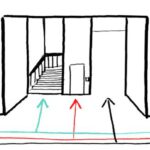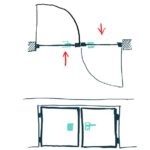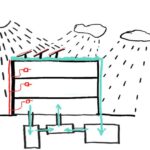We live in a world of which large parts are not actually healthy for us.
Let’s get together and change that.
Approaches to Human-Centric Design
Since we as humans are very complex creatures there are a lot of different approaches to human-centricity. The following are brief introductions of what I currently work with.
Biophilic Design

Biophilic Design is a holistic approach to making the built environment more natural and thereby more comfortable for humans as organic beings. There are three principles through which to understand and be able to design with biophilia: direct experience of nature, indirect experience of nature, and experience of space and place.
Environmental Psychology

Environmental Psychology and Architecture Psychology are branches of Psychology that deal exclusively with human behavior and mental reactions to the built environment. Environmental Psychology can also have a sustainability angle to it.
Digitalization

Digital advancements in terms of analysis software for shading or wind, as well as virtual reality options to show different design ideas to future users, help with understanding the buildings impact both on the direct environment and future interacters.
Building Biology

Building Biology has the goal to create holistic buildings that comply to healthy, natural, sustainable and beautiful principles. One focus area has become healthy indoor air (no fungi or toxins) and natural materials.
Neuroarchitecture

Neuroarchitecture is derived from combining neurosciences with architecture and design in order to understand better what makes a good building and to help put abstract topics such as ‘atmosphere’ or ‘comfort’ on a sound and scientific basis.
Participation

There are three main tools that are common for participation in building design processes. They are: user-oriented program development (PD), user needs analysis (UNA) and post-occupancy evaluation (POE). They can be of huge help when trying to understand what certain user groups are expecting of a building or how they are actually using it.
Comfort

Physical comfort depends on the ability of a room to adapt to the differing needs of the current user. The more flexible the building is able to react to varying user needs and the more controle the individual has over the comfort settings, the higher user satisfaction will turn out.
Salutogenic Architecture

Salutogenic Architecture is based on Aaron Antonovsky’s theory that people need three main concepts in order to stay healthy on all accounts. These concepts are comprehensibility, manageability and meaningfulness. Environments that comply with this concept are therefore the most comfortable ones for us.
Sustainability

There are many different approaches to sustainable building such as Prefabrication, Building with Wood and other regenerating materials, Cradle to Cradle, Passivhaus etc. Finding the best solution for each project is key for human-centricity.

 using WordPress and
using WordPress and